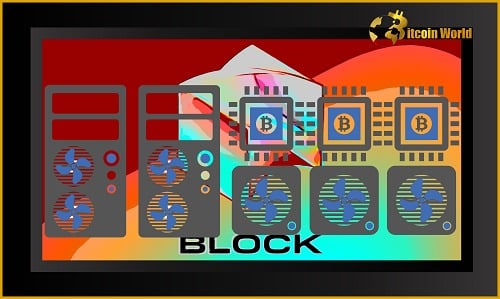Is Bitcoin mining about to get a whole lot easier and more accessible? Jack Dorsey’s Block (formerly Square) is betting on it. The company is diving headfirst into creating an open Bitcoin mining infrastructure, aiming to democratize the process and tackle some of the biggest challenges miners face today. Let’s break down what this means for the future of Bitcoin.
Block’s Bold Move: Building a Bitcoin Mining Infrastructure
Block CEO Jack Dorsey recently announced the company’s commitment to developing an open Bitcoin mining infrastructure. This isn’t just a passing interest; it’s a full-fledged initiative to address critical issues within the current mining landscape.
“We’re officially developing an open bitcoin mining infrastructure,” Dorsey tweeted, signaling a major step for Block in the cryptocurrency world.
Why is Block Doing This?
According to Thomas Templeton, Block’s general manager for hardware, the goal is to make Bitcoin mining “more distributed and efficient.” Here’s a closer look at the problems Block is trying to solve:
- Accessibility: Mining rigs are hard to come by for most individuals.
- Cost: Even if you find them, they’re often pricey.
- Reliability: Delivery can be unreliable.
- Efficiency: High power consumption and technical complexities make it difficult for newcomers.
Block’s initiative aims to level the playing field, making it easier for anyone, anywhere, to participate in Bitcoin mining.
The Hurdles in Bitcoin Mining
Bitcoin mining, which relies on a proof-of-work (PoW) system, requires miners to solve complex puzzles to validate transactions. This process demands significant energy and computer processing power, making it an expensive endeavor.
Here’s a breakdown of the key challenges:
- High Energy Consumption: Bitcoin mining is energy-intensive, raising environmental concerns.
- Expensive Equipment: Specialized computers and equipment can be costly.
- Technical Expertise: Setting up and maintaining a mining operation requires technical knowledge.
- Centralization: Large mining farms dominate the landscape, leading to centralization.
How Block Plans to Overcome These Challenges
Block is assembling a team of engineers and software designers to tackle these issues head-on. Here’s what they’re focusing on:
- Mining Rig Availability: Making mining machines easier to acquire.
- Price Reduction: Lowering the cost of entry for individual miners.
- Reliability Improvement: Ensuring dependable delivery and operation of mining equipment.
- Power Consumption: Developing more energy-efficient mining solutions.
“How can we make it such that anyone, wherever, can buy a mining machine easily?” Templeton questioned, emphasizing the company’s commitment to simplification and accessibility.
What This Means for the Future of Bitcoin Mining
Block’s entry into Bitcoin mining could have several significant implications:
- Increased Decentralization: By making mining more accessible, Block could help distribute mining power more evenly.
- Innovation: The focus on energy efficiency could drive the development of greener mining technologies.
- Greater Participation: Lowering the barriers to entry could attract more individuals to participate in the Bitcoin network.
Ultimately, Block’s efforts could contribute to a more robust, sustainable, and decentralized Bitcoin ecosystem.

Related Posts – Ex-SEC Chair, Jay Clayton Believes Cryptocurrency Industry Is For Long Haul
Disclaimer: The information provided is not trading advice, Bitcoinworld.co.in holds no liability for any investments made based on the information provided on this page. We strongly recommend independent research and/or consultation with a qualified professional before making any investment decisions.


